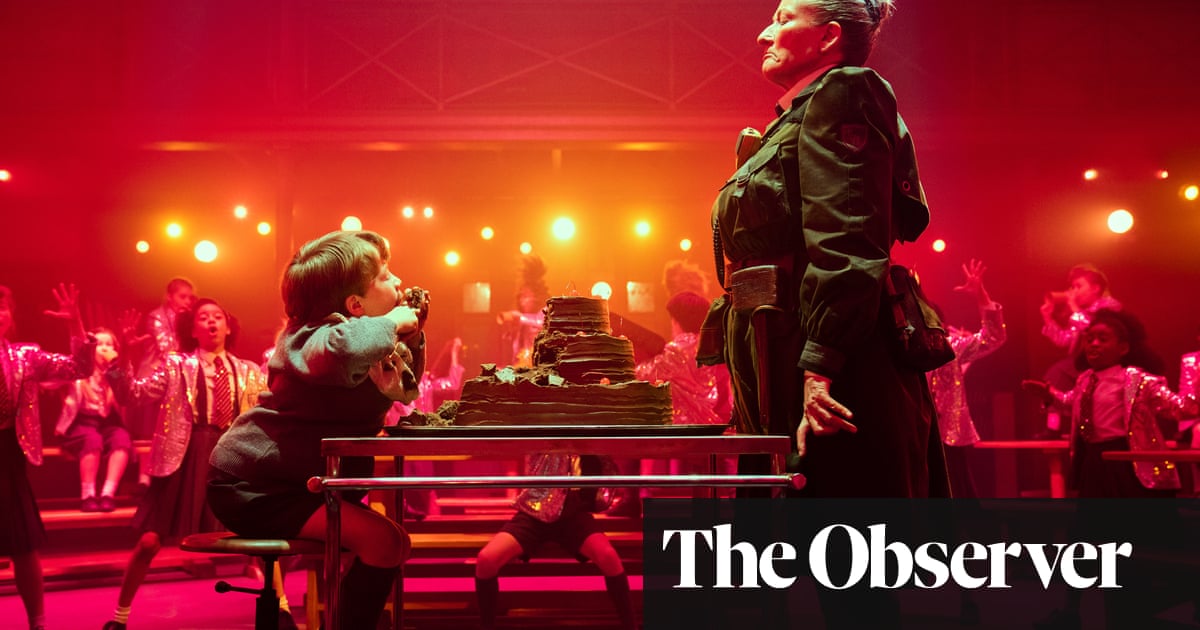
In our new monthly roundup of our music critics’ musings, we explore a forgotten corner of middle-class post-Britpop angst, and a book that argues for pop’s intrinsic magic
Inside a subversive history of music
Alexis Petridis, chief rock and pop critic
It was pure coincidence that I found myself reading Ted Gioia’s Music: A Subversive History when I heard about the launch of the “first full-service record label built on AI music discovery”, but the two fitted together perfectly. Gioia is an American musician and author: in the past, he’s written a series of acclaimed books about jazz, but Music: A Subversive History is by some distance the most wide-ranging and provocative thing he’s come up with.
In terms of scope, well, put it this way: it starts out talking about a bear’s thighbone that Neanderthal hunters apparently turned into a primitive flute somewhere between 43,000 and 82,000 years ago and ends up, 450 pages later, discussing K-pop and EDM. His central theory: music is a kind of magical, ungovernable force that connects us to ancient shamanistic rituals, it’s primarily fuelled by sex and violence – anyone horrified by the lyrics of drill or death metal should consider that the first instruments were made from body parts and would once have literally dripped with blood – and all attempts to reduce it to mathematical formulae or “quasi-science”, while useful, go against its intrinsic nature. He’s really not keen on Pythagoras, whose mathematical theories about tuning underpin “music as it is taught in every university and conservatory in the world today”.
I didn’t agree with everything Gioia had to say, but something about that central theory stuck with me. For one thing, there is something magical and ungovernable about music: that weird tingling sensation you get when you hear something you love - a friend of mine calls it the Holy Shiver - is involuntary. It just happens. And we live in an era when music has never been more governed by mathematics. Algorithms are supposed to be able to predict everything, from what you want to hear next to whether or not a song’s going to be a hit: the digital strategist who developed the software behind the AI record label that’s just launched was also “involved in the development and marketing of stars such as Avicii, Logic, Mike Posner and Swedish House Mafia”.
I use streaming services as much as anyone, but aside from their convenience, I’m increasingly convinced their influence on music is almost entirely malign and restrictive. Last year, I talked to an extremely famous pop producer who detailed the impact that the necessity to get on streaming playlists has had on what he does. Everything from the length of a song’s intro to the way it’s mixed is controlled by their metrics, which means you’re never going to get a pop single that stops people dead with its sheer leftfield WTFness: a Bohemian Rhapsody or a Rapper’s Delight or a Good Vibrations. The algorithms that claim to predict what you’ll want to hear next are based entirely on what you already like. Fair enough, but the most profound and affecting musical experiences don’t come from having your existing tastes reaffirmed, but turned on their head: that moment when an artist or a genre you’d previously dismissed unexpectedly reveals itself to you in all its glory; when it suddenly becomes apparent that something you’d thought wasn’t for you really is; when you’re made aware of how ungovernable music is. Gioia is big on music’s ability to temporarily disrupt, whether that’s punk and hip-hop or Beethoven. It struck me that the big recent disruptions in British pop – the rise of grime and dubstep – happened before streaming services took control of music’s transmission. Since then, there’s been artistic developments, but they’ve been incremental, nothing that counts as a radical shift; the disruptions, as Gioia points out, have “technological and economic”.
But Music: A Subversive History ends on an upbeat note. Gioia thinks music history is “an endless series of big bangs”, moments where it shakes up society before being “legitimised and mainstreamed”, that this happens no matter how much “institutions fight against it”. “Nothing is more unstable in music history than a period of stability,” he writes. “The signal for new disruption… is usually that things are going smoothly”. Whatever you make of his theories, you have to hope he’s right.
Back up David Gray’s White Ladder
Laura Snapes, deputy music editor
My new year’s resolution was to learn how to waste time, which has largely resulted in watching 20-year-old Jamie Oliver and Nigella repeats on the Food Network. This dirty habit got me thinking about the millennium-era hinterland between Britpop and the Strokes: the sleek, aspirational aesthetic (Alessi gadgets, loft living, the “JAZZ” poster in Hugh Grant’s living room in About a Boy, FCUK, CD towers, the new Beetle and the Audi TT, part-baked ciabatta rolls) and the drab music that went with it. “A self-satisfied, low-stakes period,” as Tom Ewing writes in his great appraisal of Robbie Williams’ Millennium.
As a 10-year-old at the arrival of the 2000s, I had no idea about a generation growing up after the post-Britpop comedown, nor how the New Labour government might play into any of this. I had never heard of Islington. But I saw this lifestyle and heard those responsible for its soundtrack – David Gray, Dido, Zero 7, Groove Armada, Röyksopp, hazy Balearic dance music – through British romcoms and The Naked Chef, and was captivated. (I still use the bank account that I opened because it came with a free Toploader album.)
As millennials grow up and claim more cultural space, plenty of music from this period has been critically rehabilitated: Destiny’s Child as trailblazing R&B stars, Shakira as a master of “erotic power”; emo for its portrayal of masculine sensitivity, even nu-metal as a kind of experimental rock vanguard. That hasn’t come for this music – often acoustic, maudlin, faintly tinged with trip-hop – and I wonder if it ever will. This Friday, David Gray is reissuing White Ladder for its 20th anniversary (though really its 22nd, if you count its initial, unsuccessful release in 1998) and I can’t imagine sympathetic reconsiderations are forthcoming. Singles Sail Away and Babylon still have a deep emotional tug, though the lovelorn Gray of the late 90s sounds almost wearier still for all the cultural baggage he’s dragging alongside the heartache. I barely noticed as the middle of the album shrugged along.
White Ladder may be more useful as a time capsule. As monolithic as these songs feel, it’s striking how unseated Gray is in the lyrics: reaching for love as a stabilising force in a world he no longer understands, despite it arriving during a relative period of stability: White Ladder hit No 1 in the UK for the first time five weeks before 9/11. That desperation for intimacy in upsetting times has to be at least partially responsible for it becoming one of the longest-charting albums in UK history and our 28th best-selling album of all time. And its long-tail effect: Gray may no longer be the commercial giant he once was, but we haven’t escaped his influence – just look at Lewis Capaldi, another balladeer buoying Britain through hard times.
Meanwhile, lifestyle is no less of a stand-in for personality than it was becoming then. When I mentioned my interest in this period on Twitter, critic Simon Price alerted me to the existence of Jamie Oliver’s 2000 compilation Cookin’: Music to Cook To, and shared Oliver’s annotated liner notes. As endearingly guileless as they are, you have to suspect that a guy who built an empire on liberal application of olive oil and fake geezer patois knew exactly what he was doing when he reminisced about the Manic Street Preachers’ Motorcycle Emptiness – a song about consumerism destroying identity – being “the first song I played when I passed my driving test on my 100W Pioneer”. Happy days.
Truth or dare? Madonna’s riotous music doc revisited
Laid up with flu a couple of weeks ago, I missed my chance to see Madonna at the Palladium. Wesley Morris’s New York Times review of Taylor Swift’s new documentary reminded me that I hadn’t seen Madonna’s 1991 tour film, Truth or Dare, which he called “the Olympic standard for pop-star portraiture”, so I downed some more Sudafed and cued it up. What a riot it is. From a journalistic perspective, the complete access that director Alek Keshishian had to Madonna during her 1990 Blond Ambition tour seems like the stuff of fantasy today, when many pop stars are disinclined to talk to the press.
Keshishian is right there as Toronto police order Madonna not to stimulate masturbating on stage – and when she does it, and they decide not to bother arresting her, she tell the press that they did anyway. We see her sticking her hand in her crush Antonio Banderas’s face when it turns out he’s married. She is a mercurial protector of her vulnerable dancers, catty and capricious and brilliant. But without detracting from how much I loved it, it also made me think about what counts as a revealing portrait of a female musician, especially after I read film-maker Brit Marling’s recent op-ed on her dissatisfaction with a trope that defines many leading roles for women. “The more I acted the Strong Female Lead,” she writes, “the more I became aware of the narrow specificity of the characters’ strengths – physical prowess, linear ambition, focused rationality. Masculine modalities of power.”
It’s a thrill to see a musician – especially a female one – live up to their outrageous reputation, though that shouldn’t make smaller truths and vignettes on less outlandish behaviour feel any less significant in different kinds of stories. Although there were all sorts of topics I would have loved to see Swift get to in Miss Americana (topics I didn’t have time for in our 45-minute conversation last August), I felt like the film did a great job of showing exactly what the four walls of her existence look like; where the boundaries were and which of them she was willing to breach. Truth or dare needn’t be mutually exclusive – as The Nowhere Inn, a forthcoming tour mockumentary in which Sleater-Kinney’s Carrie Brownstein attempts to make a movie about St Vincent, satirises brilliantly. LS
Ben Beaumont-Thomas, music editor
It may not have won any of the 23 Oscars, Baftas or Golden Globes that it was nominated for, but The Irishman is still one of the finest movies of 2019. As ever with Scorsese’s gangster pictures, he gets so much mileage out of the stupidity of violence. There’s outright slapstick at one end, with black comedy somewhere towards the middle; down at the other end is the sad pointlessness of what these men are doing to each other. “They do something to me, I do something to them,” Al Pacino’s Jimmy Hoffa says at one point. “That’s all I know. I don’t know anything else, do you?” On and on it goes, the retributive violence of these men, violence that is kept alive in the rickety cage of an honour code. The darkest running joke in Scorsese’s movies is that all the shootings and beatings are meted out in the name of “respect”.
Watching The Irishman and Goodfellas in close succession, it struck me that music is a key part of this world-building. So much Scorsese business goes on in bars and clubs, all the glad-handing and performative respect-showing, and this requires a certain soundtrack: crooning. This is music that smooths out rough edges, that is all about respect, to one’s ears at least – it’s almost as if these singers have been hired to keep the hoods calm. Their dreamy love songs signify classiness, and signifiers of classiness – suits, cars, jewellery, handshakes – are what make Scorsese’s corrupted worlds go round, rather than the hard work of genuinely classy behaviour.
Here and elsewhere, music is a neat way to conjure a period atmosphere, or make subtle jokes, like the use of Frosty the Snowman during Goodfellas’ coked-out Christmas. But it’s often deeper than that. Take the scene in Goodfellas where the wiseguys rough up the mailman for delivering messages from Henry’s school to his parents, that let them know he was missing class (double meaning intended). It’s soundtracked not by sinister orchestral brooding, but by the peppy 1950s pop song Hearts of Stone by the Charms – it’s as if Henry is filling his own head with the jolly music, drowning out the wrongness of what his new employers are doing, and casting it merely as energetic alpha business. The audience, in turn, is seduced into thinking these guys are brashly cool. Scorsese uses music to blur our sense of morality, and gaslights us into thinking these people are maybe alright after all. Our own moral compass spins around hopelessly, while his quietly stays the course.
Further reading
Taylor Swift and the grey area of disordered eating, Anne Helen Petersen, BuzzFeed
BuzzFeed’s resident celebrity academic re-examines a controversial period in Taylor Swift’s history in light of her revelation, from new documentary Miss Americana, that she experienced an eating disorder earlier in her career.
The tide has rapidly turned on Billie Eilish, Craig Jenkins, Vulture
In her debut Vogue cover, Billie Eilish attempted to make a clumsy distinction between “writing a story”, as she says she does in her music, and “lying”, pointing the finger at (nameless) contemporary rappers for “posturing”. Rap fans were quick to point out Eilish’s musical and stylistic debt to hip-hop – not to mention her avowed admiration of rappers including the late XXXtentacion – and a backlash started to brew. Vulture’s Craig Jenkins took a characteristically rational look at both sides of the debate.
How Colors became the music industry’s tastemaker, Nathan Ma, FFWD
As Christine and the Queens debuts her immaculate new single as a live Colors session, this piece from October 2019 on how the Berlin-based live performance channel became a major industry player is worth reading.
Your thoughts
We’d love to hear from you about the music you’ve been loving over the last month or so, and any random musical thoughts you’ve been having – please share them in the comments below and we’ll include the most interesting in next month’s column.
We liked this comment last month in response to Laura’s ode to the iPod, from stevelowmusic: “Good thing about the iPod classic is you can search for music under the blankets in the dark without looking with its 2 controls with no fear of waking your partner. It’s a kind of braille that you learn - you know that Steve Winwood is near Steely Dan etc.”
Uche Oka was more disparaging of the now-ancient tech: “For the most part, music consumption has improved massively over the last 8 years. There is simply no point trying to make out as if the ipod was in any way a superior device. It wasn’t. It was clunky, had limited disk space and only the nano and shuffle versions offered any real portability. There is virtually nothing that makes owning music in any way a superior to current options like Spotify. You never owned your digital downloads either...its like everyone suddenly forgot what a massive legal headache this was.












